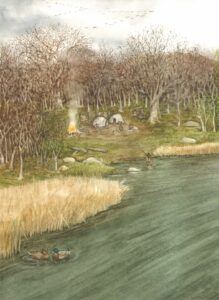
Hindsight, we are told, is a wonderful thing. In many ways, it is. But in some ways, it can hinder our view of the world.
Over the past few years, I have been part of a team researching the changing Continue reading Hindsight

Hindsight, we are told, is a wonderful thing. In many ways, it is. But in some ways, it can hinder our view of the world.
Over the past few years, I have been part of a team researching the changing Continue reading Hindsight
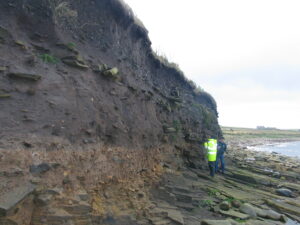
One of the most common calls I get is about coastal erosion. Orkney, indeed Scotland, is known for its archaeology. It is not surprising, therefore, given the length of the coastline, and high energy content of the surrounding seas, that the remains of ancient sites are to be found, dropping out of the cliffs and sand Continue reading The sadness of coastal erosion
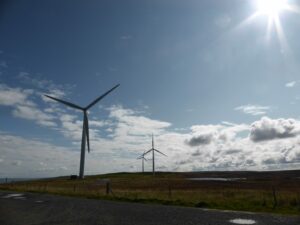
An ongoing research project reminds us of the ways in which archaeology encompasses even the most recent and widest uses of material culture. Orkney Energy Landscapes is a collaborative project between The Archaeology Institute, Continue reading Archaeology and the future
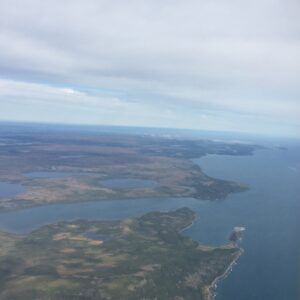
I’ve just been reading a wonderful book and I thought I’d write about it. I don’t often feel that I want to push a single publication, but this has really got me thinking.
The book is Woman of Labrador by Elizabeth Goudie. It was first published in 1973.
Elizabeth Goudie lived among the trapping communities of Labrador in the early twentieth century. Despite only having some four years schooling, she set out to describe her life there, because of the changes that she saw taking place around her as the decades progressed. It is a straightforward account. Compassionate, unrelenting, and yet never complaining. Elizabeth was just as much part of the twentieth-century as my own grandparents in central London, and yet she provides an intimate glimpse into a life that was so different. Despite talking about the past, her memories are so vivid that she often talks in the present tense, adding a sense of immediacy to the world she describes. I don’t think she meant to, but she has given us a beautiful evocation of the life of a hunter-gatherer.
The book is full of quotes that highlight the ethos of the community where she lived:
‘Then there would be no more hunting because the birds would lay their eggs and people would not hunt birds anymore until September. That was the custom of the country. Everybody kept it’ (p48).
Of course, you cannot extrapolate one person’s thoughts to another, never mind the customs of one community to another, much less the present to the past. But reading her book provided me with a strong sense of how it was to live from the land in a way that most of us will never experience.
There is a strong idea of community. Despite the fact that individual families occupied isolated houses in separate bays, they clearly felt together. Help was not refused, food was shared in times of hardship, and beds were always available for those who might turn up.
The care taken to conserve resources is clear. There is a time and place for everything and the families lived to a strict annual round. February was a month of rest, March for catching rabbits and partridges, in April trout were to be caught, and in May people caught smelts to use as fertilizer on potato patches, there were seals to be caught in June, while in July and August the winter wood pile was replenished and work started to repair canoes and equipment for the winter, September was busy with berry picking, October with drying and preserving, November was the time to make and repair clothing, it took a whole month just to prepare the kit for the men to leave for their trap lines which they did in December, returning home in January. As she said: ‘Our months were not wasted and we had little time for reading or any kind of pleasure’ (p119).
It is a highly mobile life, from salmon camps to winter houses and so on. Journeys were mostly undertaken by canoe or dog sled, though long journeys on foot also took place, making use of snowshoes. She describes long treks with the family, often over several weeks, and sometimes in sub-zero temperatures, spending the nights with the families who lived en route. ‘A team of dogs can be great company when you are alone’ (p89).
It was a hard life, something Elizabeth only acknowledges in the later passages, where she describes the easier life they had from the 1940s onwards. More or less everything, from clothes, to furniture, fuel and food, had to be made or prepared at home. In several locations fresh water required an arduous walk, and sometimes had to be brought home as blocks of ice. Very little was bought: mainly flour and fat. There is an interesting description of the problems caused when the flour supply fails on one occasion.
Much of the daily work is undertaken by the women, men were away at the traplines for long periods of time. For this reason, women were obviously as skilled with a rifle as they were with needle, frying pan, or axe. Although there were medical services, these were not always easy to access and home remedies as well as first aid knowledge were much in demand. I now know how to make an effective poultice from juniper stems. It is also interesting to hear her talk of the problems of mosquitos and flies. One of the enduring questions relating to the earliest settlement of Scotland regards the presence (or not) of the Scottish Midge and its likely impact on life and general morale – not good, if her feelings are anything to go by.
It is a resilient society. Struggles and hardship are depicted in detail, and yet with a mundane tone that belies the emotions that must have come to the fore. Life was not easy, or comfortable. Food shortages, temperatures of thirty or forty below zero that would leave us gasping, debts to the company store, illness and injury. There is a moving account of the problems of digging a grave for a toddler in frozen ground. People had to develop a way around it all, often moving on when times got too hard.
Of course, everyone knew and understood the land in considerable depth. This is clearly demonstrated, though there is little overt discussion of the landscape within which lives played out. In some ways it appears a passive backdrop. True appreciation of the world in which people lived is seen on the few occasions when there was time for leisure and the writing becomes positively lyrical to express deep feelings for the surrounding beauty of the mountains and coasts.
Elizabeth’s community were not the only people to live in the region. There were also ‘Indian’ families, most of whom did not speak English. Though there was mutual respect, there seems to have been little contact between the two groups except when help was needed. It was a different world.
All things change and by the 1940s the construction of a military air base in Goose Bay precipitated the arrival of the end for the mobile lifestyle. Paid work was soon followed by chocolate, movies, roads and electricity. This book is just one of a suite of publications that describe bygone ways of life around the world, but it is one of the most vivid. I’m so glad she wrote it.
‘I would rather live back fifty years ago, because today you turn on your radio or television and you hear all sorts of news about going to the moon or war or whatever and you feel afraid that something fearful is going to happen’ (p 192).
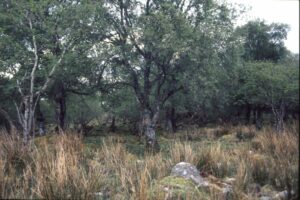
I’m often asked about the lessons that archaeology can offer the populations of today. In particular, people are interested to know about research on past sea-level and climate change. In general, I am sceptical that archaeology has anything much to offer. Population levels today are so much higher than they Continue reading Archaeology: the essential ingredient of Rewilding
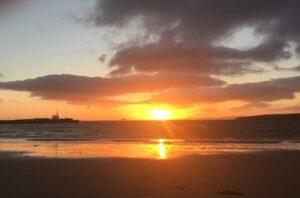
We are slowly moving out of Summer and into Autumn. This time of year is often one of warmer, more settled weather up here in the north, and this year it is very welcome. In general, it has been a bad summer. Temperatures have been low and there has been a lot of rain. Continue reading At One with the World
You must be logged in to post a comment.